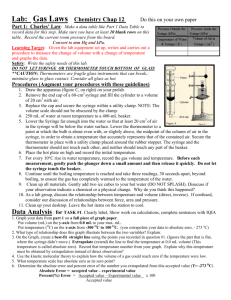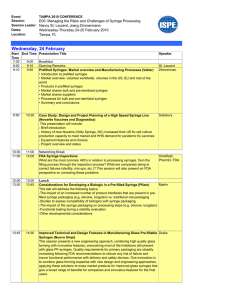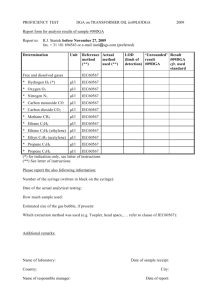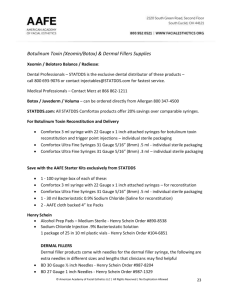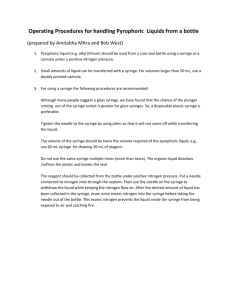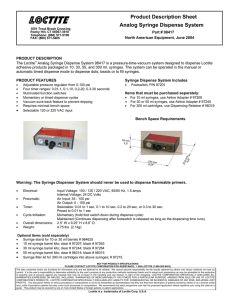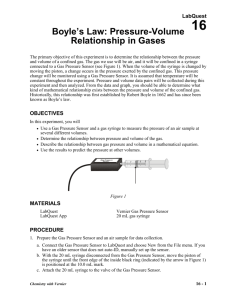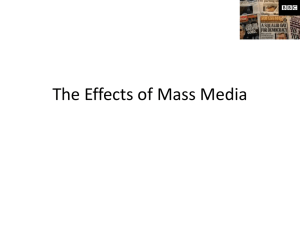Absolute Zero: Application of Charles`s Law
advertisement
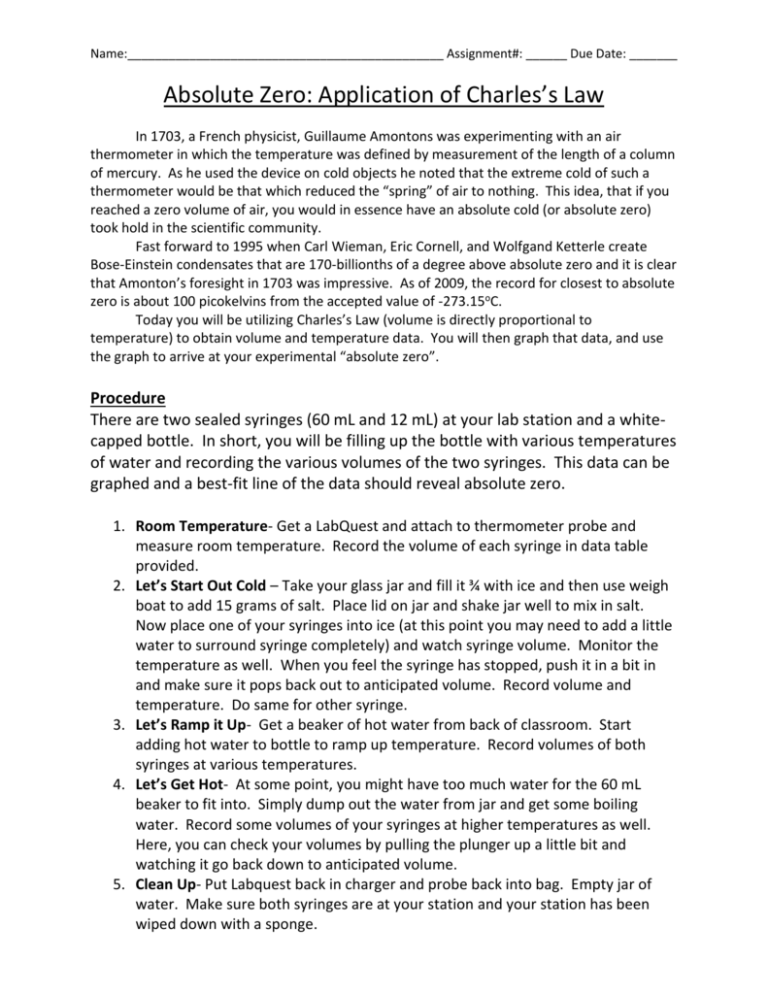
Name:______________________________________________ Assignment#: ______ Due Date: _______ Absolute Zero: Application of Charles’s Law In 1703, a French physicist, Guillaume Amontons was experimenting with an air thermometer in which the temperature was defined by measurement of the length of a column of mercury. As he used the device on cold objects he noted that the extreme cold of such a thermometer would be that which reduced the “spring” of air to nothing. This idea, that if you reached a zero volume of air, you would in essence have an absolute cold (or absolute zero) took hold in the scientific community. Fast forward to 1995 when Carl Wieman, Eric Cornell, and Wolfgand Ketterle create Bose-Einstein condensates that are 170-billionths of a degree above absolute zero and it is clear that Amonton’s foresight in 1703 was impressive. As of 2009, the record for closest to absolute zero is about 100 picokelvins from the accepted value of -273.15oC. Today you will be utilizing Charles’s Law (volume is directly proportional to temperature) to obtain volume and temperature data. You will then graph that data, and use the graph to arrive at your experimental “absolute zero”. Procedure There are two sealed syringes (60 mL and 12 mL) at your lab station and a whitecapped bottle. In short, you will be filling up the bottle with various temperatures of water and recording the various volumes of the two syringes. This data can be graphed and a best-fit line of the data should reveal absolute zero. 1. Room Temperature- Get a LabQuest and attach to thermometer probe and measure room temperature. Record the volume of each syringe in data table provided. 2. Let’s Start Out Cold – Take your glass jar and fill it ¾ with ice and then use weigh boat to add 15 grams of salt. Place lid on jar and shake jar well to mix in salt. Now place one of your syringes into ice (at this point you may need to add a little water to surround syringe completely) and watch syringe volume. Monitor the temperature as well. When you feel the syringe has stopped, push it in a bit in and make sure it pops back out to anticipated volume. Record volume and temperature. Do same for other syringe. 3. Let’s Ramp it Up- Get a beaker of hot water from back of classroom. Start adding hot water to bottle to ramp up temperature. Record volumes of both syringes at various temperatures. 4. Let’s Get Hot- At some point, you might have too much water for the 60 mL beaker to fit into. Simply dump out the water from jar and get some boiling water. Record some volumes of your syringes at higher temperatures as well. Here, you can check your volumes by pulling the plunger up a little bit and watching it go back down to anticipated volume. 5. Clean Up- Put Labquest back in charger and probe back into bag. Empty jar of water. Make sure both syringes are at your station and your station has been wiped down with a sponge. Name:______________________________________________ Assignment#: ______ Due Date: _______ Data Table 12 mL syringe Volume (mL) 60 mL syringe Temp (oC) Volume (mL) Temp (oC) Graph See sample of graph provided by instructor. You can use graph paper to do graph, but special consideration (chem dollars) will be given to those students who graph with computer program and use slope of best-fit line to calculate their “absolute zero”. What to Turn in Turn in graph (6 pts) either on graph paper or computer generated. An electronic data table should accompany graph (5 pts). Answers to questions (on back) should be typed and included with graph and data table. Questions 1. As the temperature of a gas decreases, its volume ____________. (Charles’s Law) (1 pt) 2. Explain why this happens (referring to #1) (Don’t just say “because the temperature goes down.) Explain in terms of the gas particles. (2 pts) 3. What is temperature? (1 pt) 4. Would this experiment give different results if 100% helium was inside the syringes as opposed to air? Explain why or why not? (2 pts) 5. Your value for “absolute zero” will be the point where your line crosses the x-axis (volume = 0). Based on your graph, what is your value for absolute zero in each syringe? (2 pts) 60 mL syringe ___________ 12 mL syringe ______________ 6. The theoretical value for absolute zero is -273.15oC. Show the calculations for the percent error for each syringe and report those values. (2 pts) 7. What are two possible sources of error for this lab, and how would you correct them? (4 pts)
